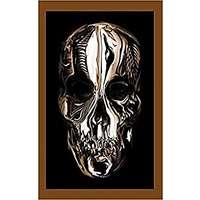Alexander McQueen by Andrew Bolton EPUB & PDF – eBook Details Online
- Status: Available For Free Download
- Author: Andrew Bolton
- Language: English
- Genre: Popular
- Format: PDF / EPUB
- Size: 2 MB
- Price: Free
When Lee Alexander McQueen was born, on 17 March 1969 at Lewisham
Hospital in south-east London, he weighed only five pounds ten ounces.
The doctors told his mother Joyce that his low weight could mean that he
might have to be placed in an incubator, but he soon started to feed and
mother and baby returned home to the crowded family home at 43 Shifford
Path, Wynell Road, Forest Hill. Although Joyce and Ron, in the words of
their son Tony, ‘always said that he [Lee] was the only one they tried for’,
the birth of the youngest of their six children did nothing to soothe the tense
atmosphere in the McQueen household.
‘My dad had a breakdown in 1969, just as my mum gave birth,’ said
Lee’s brother Michael McQueen. ‘He was working too hard, a lot of hours
as a lorry driver with six children, too many really.’1
His brother Tony, who
was fourteen years old at the time, remembers noticing that one day his
father went unnaturally quiet. ‘He was working seven days a week, he was
hardly ever home,’ said Tony. ‘My mum got someone round and they
institutionalized him. It was a difficult period for us.’ Joyce, in an
unpublished manuscript she compiled for the family, noted that her husband
spent only three weeks in Cane Hill Hospital, Coulsdon, but according to
Tony, ‘Dad had a nervous breakdown and he went into a mental institution
for two years.’2
Cane Hill Hospital was the archetypal Victorian asylum, an enormous
rambling madhouse of the popular imagination. Designed by Charles Henry
Howell, it was originally known as the Third Surrey County Pauper Lunatic
Asylum, so-called because the county’s other two institutions, Springfield
and Brookwood, had reached full capacity. ‘Cane Hill was typical of its
time, providing specialized wards for different categories of patients, with
day rooms on the ground floor and dormitories and individual cells mostly
on the second and third floors,’ wrote one historian. ‘Difficult patients were
confined to cells and those of a more clement disposition could walk the
airing grounds . . . By the 1960s, the hospital had changed little.’3
Former
patients included Charlie Chaplin’s mother, Hannah, and the half-brothers
of both Michael Caine and David Bowie, who used a drawing of the
administration block on the American cover of his 1970 album The Man
Who Sold the World.
Lee McQueen was fascinated by the idea of the asylum – he featured the
iconography of the madhouse in a number of his collections, particularly
Voss (Spring/Summer 2001) – and he would have been intrigued by the
rumours about a subterranean network of tunnels near Cane Hill. Over the
years it has been suggested that the series of brick-lined tunnels housed a
mortuary, a secret medical testing facility and a nuclear bomb shelter.
Although the truth was much more mundane – the tunnels were built as
bomb shelters during the Second World War and then taken over by a
company that manufactured telescopes – the network of underground
chambers ‘became somehow connected with the institution and the obscure
rusting of machinery took on sinister new overtones, driven by the
superstition surrounding the complex’.4
For More Read Download This Book
EPUB



